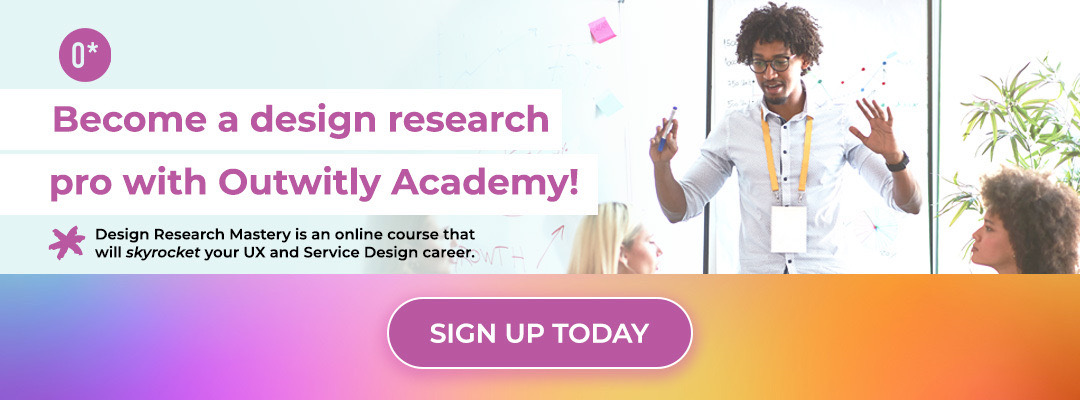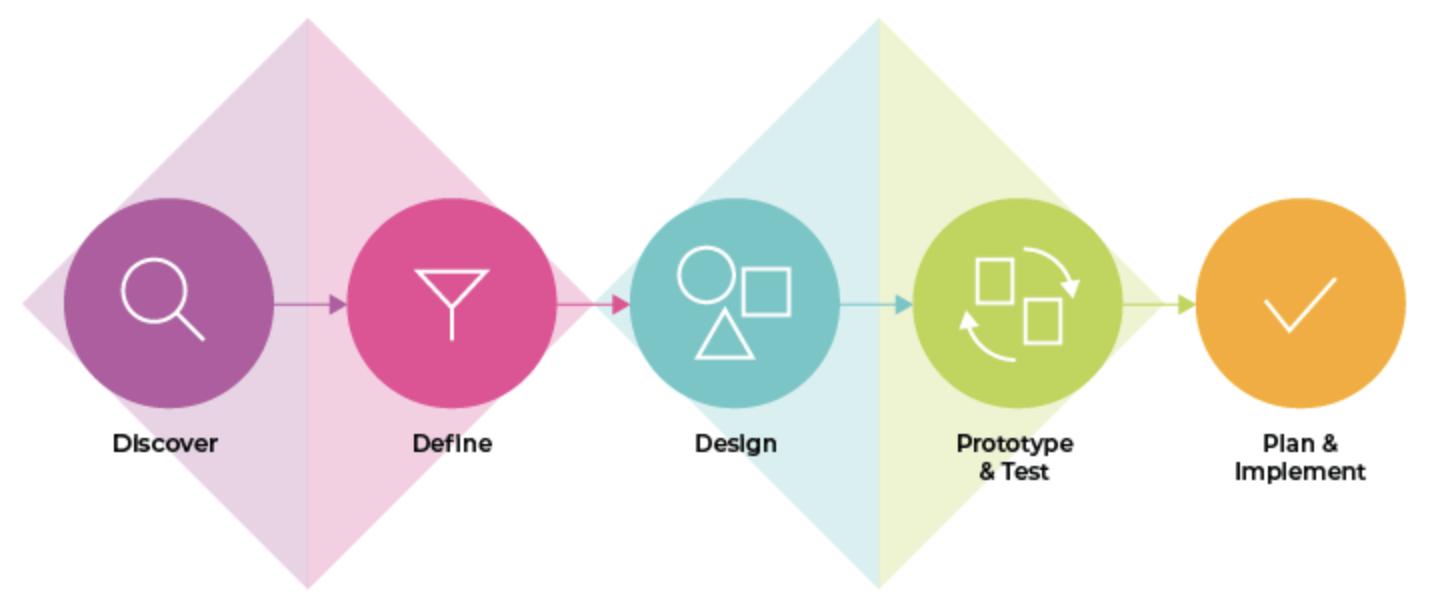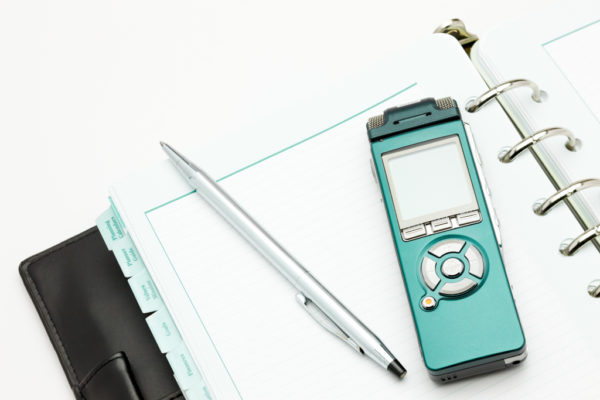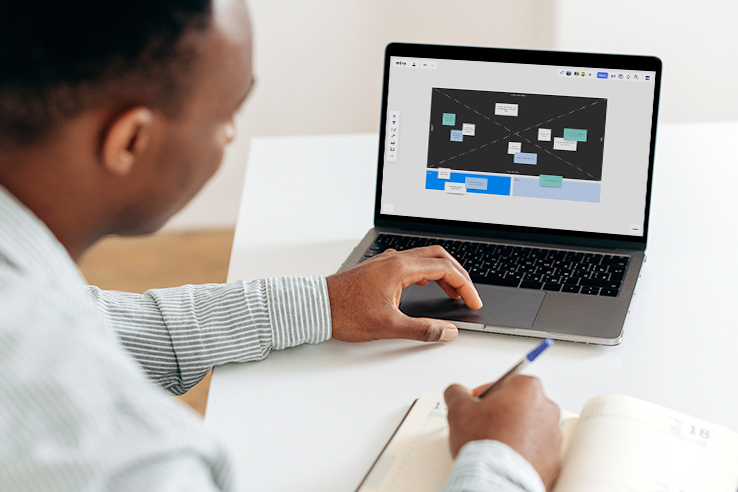
At Outwitly, Design Research is what we do. If you’re reading this blog entry, you might be curious about design research, already involved in the research process, or downright obsessed (just like us!). Today’s post is what we like to call a “roundup” of our favourite past posts on the topic of design research. We’ll be diving into the methods, practices, and pitfalls associated with one of our all-time favourite topics.
In this post, you’ll learn…
- How to plan and prepare for discovery research.
- How to get the most out of your research.
- One research method we’d recommend you steer clear of.
- And a few research methods we sing the praises of.
Also, you’ll notice in this post we use UX Research, Discovery Research, and Design Research interchangeably. While UX Research is specific to researching digital or online experiences, there are significant overlaps with the work done in design research. Similarly “discovery research” simply refers to research that is done in the early stages of the project (this is where most design research is conducted).
Let’s get started!
Design Research: What is it and why is it important?
Design research is research for the purpose of improving the design of an experience, whether that is an employee experience, a mobile app experience, an internal business process that is clunky and repetitive, or a government service – like getting your driver’s license. It typically involves a mix of primary (such as interviews and observations) and secondary research (desk research, literature reviews, jurisdictional scans, and more). And, it is most often conducted in the early stages of the design process (before design work has actually begun!)
We may sound like a broken record here, but for starters, investing in design research will save you precious resources like time and money! (Say less, right?) When you understand what your users or customers truly need early on in the process, you can spend your hard-earned money and valuable time creating a product or service they’re guaranteed to want and use. When you create a product that’s valuable to your user, they are much more likely to offer their loyalty and you’ll be able to de-risk product launches. (This also means a reduction in customer churn, AKA, the rate at which a company loses customers each month!) Through design research you will uncover hidden opportunities for innovation, major pain points in the customer journey, areas of improvement, and opportunities to delight your users and customers in unexpected ways.
“Wonder what your customers really want? Ask. Don’t tell.”
— Lisa Stone
Planning and Preparing for Research
So, you finally have stakeholder buy-in and you’re getting your organization ready to conduct research. Congratulations! You’re excited to better understand the needs, challenges, and motivations of your users and customers, but you might also feel overwhelmed and confused on where to begin. There is a TON of planning that goes into this type of initiative!
Whether you’re new to design research, or you’re pushing expert level and are just in need of a refresher, knowing how to properly set up and plan a research project is an essential skill. Laying solid groundwork means you have a much better shot at getting the right type of insights. We advise you set aside 2-6 weeks of time to plan for your research (which includes time for recruiting research participants), depending on the scope of your project. Make sure to keep higher-ups looped in and involved throughout the process, this will help to further invest them in the research itself.
Want more on this topic? Our recommended read is UX Research: How to plan and prepare for discovery research?
In this post, we cover…
-
Scoping Discovery Research: How do you know how much research to actually conduct?
-
Elements of a Strong Research Plan: Research plans will vary depending on where you work and what research you are conducting, but a solid research plan includes a few specifics.
-
Recruiting Strategies for User Research: The most common methods we’ve used to recruit participants for research.
Click here to read more about how to plan and prepare for discovery research!
Now you’ve nailed down your plan and know exactly how to take action, but there are a few questions remaining. You don’t quite know if you’re conducting research at the right time, or in the right way, to reap the full benefits for your products and services.
Get the Most Out of Research
In order to get the most out of your investment, you’ll want to enlist all types of design research used in Human-Centered Design: exploratory, generative, and evaluative. These research types should be used in conjunction in order for you to reap the greatest benefits! To be sure you’re doing research the right way, it’s helpful to know what doing it the wrong way looks like. There are five common mistakes most companies make when conducting user research.
Remember, design research is majorly concerned with user behaviours, underlying motivations, and challenges, focusing on making the design better and improving user experience. In order to get the best insights and benefits out of your research, you’ll want to make sure you spend a little extra time getting it right.
Want more on this topic? Our recommended read is How to get the most out of your user and customer research?
In this post, we cover…
-
A deep dive into the types of design research: You need all three types of research, and it’s best to use them in order!
-
5 common pitfalls and mistakes we see being made in the process: Be aware of the most common pitfalls and avoid them at all costs!
-
4 tips for getting the best insights and the most value from research: If you’ve already fallen prey to the aforementioned pitfalls, you can turn your project around. If you’re just starting out, let these tips be your guide!
Click here to read more about how to get the most out of your user and customer research!
Now that you’re clear on how to get the most out of your user and customer research, we want to keep you on the right track with a quick warning. There are many awesome research methods for you to use, but fair warning, there is one particular tool proven to provide skewed results.
Beware of Focus Groups
If you’re a seasoned designer, you may relate to the headache that accompanies a client’s request for running a focus group. The truth is, focus groups are not the best tool for gathering customer feedback or insights that are meant to inform product and service decisions. They can be great in a marketing context, but less so in design. According to experts in behavioural psychology and sociology, there are many human tendencies that make focus groups a problematic tool. Studies show that focus groups often contribute to biases such as Group Think and may skew research results. Let’s face it, biases are natural and sometimes inevitable, but they can really make user research more difficult.
If you aren’t totally convinced that focus groups aren’t the ideal research method, we think we can help get you there.
Want more on this topic? Our recommended read is Why you should stop using focus groups to gather customer feedback?
In this post, we cover…
-
Focus groups vs. Interviews vs. Workshops: What’s the difference? Learn why these other research methods are much more effective and insightful.
-
Reasons to stop using focus groups as a research tool: Uncover the seven effects of human bias that are threatening for focus groups.
-
The research tools to use instead for better results: Deciding what to use depends on what you are hoping to find out and why you are seeking feedback in the first place.
Click here to read more about why you should stop using focus groups to gather customer feedback!
Now that we’ve gotten focus groups out of the way, we want to share some of our favourite qualitative research methods and strategies that you can immediately start applying to your research projects!
The In-Depth Interview
One of the most frequently used research methods is the in-depth interview. In-depth interviews allow for you to learn a ton about your participant in one sitting, and are relatively easy to set up and execute. Interviews are an ideal method for understanding user pain points, motivations, and diving deep into their workflows and needs. It’s best to conduct in-depth interviews during the Discovery phase (aka discovery research) of the Human-Centered Design process.
Want more on this topic? Our recommended read is Research Methods: In-Depth Interviews
In this post, we cover…
-
What are in-depth interviews?: We break down how and when you can use them.
-
Our best tips for planning the logistics of your interview: The smoothest running interviews are methodically prepared and thought through.
-
7-tips for in-depth interviewers: Interviewing is truly an art form! We share our best advice for hitting your interview out of the park.
Click here to read more about the design research method: in-depth interviews!
While we’re on the topic of conducting in-depth interviews, we couldn’t forget to let you know about one of our most downloaded freebies: Plan a Stellar User Interview Workbook! We know you’re ready to plan user and customer interviews like a pro, and this workbook will be the perfect addition to your toolkit.
Remember when we said it’s best to use research methods in conjunction with one another? We wouldn’t leave you hanging without another suggested method to incorporate into your research.
Diary Studies
Diary studies are a great research method for collecting qualitative data and better understanding user behaviour over an extended period of time! Diary studies are a great way to capture and learn more about a user’s experience, making them an excellent insight for your next design research project. They can be used in lieu of contextual observations (another favourite method of ours!), especially these days, since in-person research can be difficult. Diary studies can be conducted remotely, but still provide the contextual and behavioural insights that observations bring. They’re great to use when you are trying to understand or create a journey map of your customer’s interactions with your organization, product, or service.
Nielsen Norman Group says that providing an incentive for diary study participants can ensure you get the level of involvement you need. We couldn’t agree more! Diary studies do require more investment than other research methods like an hour-long usability test or a survey. Their best tip is to, “Align the incentive with the amount of work required over the period of the study. Consider breaking apart the total incentive and offering smaller installments as participants reach specific milestones.” We’ve seen this work and we usually set up an incentive structure over a 30-day period – the longer a participant stays on, the more money they’ll make.
Trust us – the value you’ll receive from a well-completed diary study has the power to completely transform your product or service offering. You can learn a lot from your user through this design research method!
Want more on this topic? Our recommended read is Research Methods: Diary Study
In this post, we cover…
-
What diary studies are and when they should be conducted: Which types of projects are diary studies best suited for?
-
How to properly set up a diary study: Learn all about elements like participants, format/medium, duration, incentives, and more.
-
Analyzing and making sense of diary study data: There’s an entire science to this – it’s the human-centered design process at work!
Click here to read more about the design research method: diary studies!
We hope you enjoyed our roundup of our best posts on design research. Conducting research is truly the best thing you can do for the success of your next product, service, or feature. Keep up the hard work and never stop talking to your users and customers. You’ll be hearing from us a lot more on the topic in the coming weeks, so stay tuned and be ready to learn!










